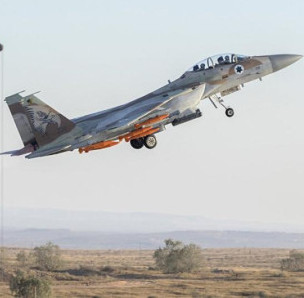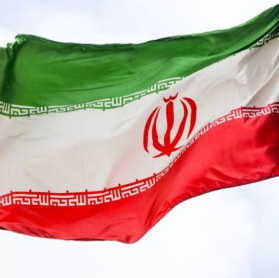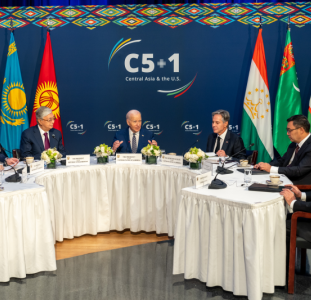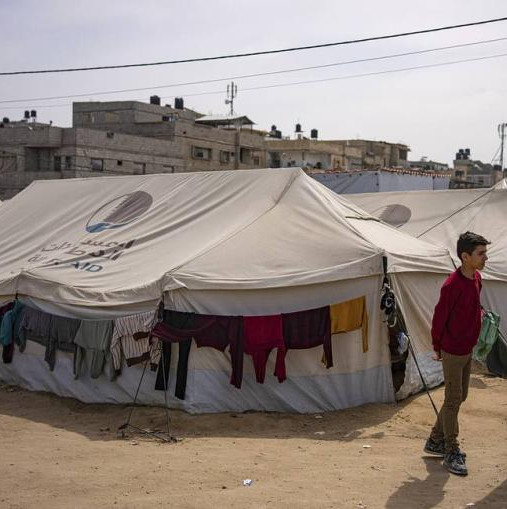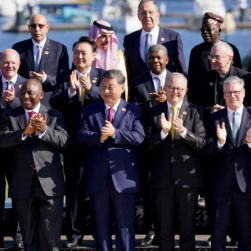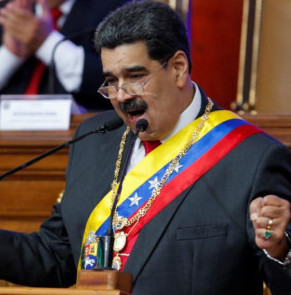Though western historians are of different opinion, considering that a crucial point of the war was the battle near El Amin (Egypt), where the 8th English army delivered a fatal blow to Italian-German troops. But in this battle the number of manpower was 23 times less than in the Moscow one. More than 7 million people were drawn into the orbit of the grandiose battle for the Soviet capital on either side.
I do not want to belittle the glory and significance of any other battles. I am a historian, use just facts, and they say the following: in the fields of Moscow area there were 3.4 million more of soldiers and officers than in the battle for Stalingrad, 3 million more than in the Kursk bulge and 3.5 million more than in the Berlin operation.
Fascists connected the capture of Moscow with the elimination of the last obstacle in their path to conquest the world supremacy. It was “a gun put against Soviet heart...” The capital’s fall was embodied in the whole country conquest, and after that fascists were aimed at the Mediterranean. Moscow’s seizure must have also served a “signal flare” for the militaristic Japan.
A week after the beginning of the war Germans had already overcome one third of the distance on way to Moscow. At such a pace they could reach its walls in a couple of weeks. The Soviet leadership had to radically restructure warfare plans. The State Defense Committee adopted a special decree on the capital city defence. In an incredible short period of time the city was transformed into a real fortress.
In different parts of the country combat divisions and brigades were rapidly formed to defend Moscow. Endless troop trains came from the Far East, Siberia, from behind the Urals, from expanses of Central Asia. At this time the Moscow City Party Committee received a letter from Alma-Ata that included the following lines: “We will spare no effort to help the Red Army ... We will give as much lead, copper, coal and oil as necessary to defeat the enemy ... Together with the great Russian people, we will defend our beautiful capital to the last drop of blood, to the last breath.”
On 13 July the 316 Rifle Division began to form in Alma-Ata. Mainly residents of Almatynskaya, Zhambulskaya and Yuzhno-Kazakhstanskaya oblasts, and partly the people of Kirghizia were recruited in it. This multinational military formation consisted by 40% of Kazakhs, by 30% of Russians, and by 30% of representatives of other 26 Soviet peoples. Military Commissar of the Kyrgyz Republic, who arrived in Alma-Ata with his assistant, and the instructor of the Alma-Ata military registration and enlistment office Senior Lieutenant Baurdzhan Mamyshuly during one week and half of another completed the formation of a division. Major-General Ivan Vasilievich Panfilov, an experienced military leader, who fought back in the Civil War, was appointed the commander. He enjoyed great respect and love of the soldiers, who called him “our elder”, “our father” and themselves – the Panfilovs.
In late July, more than 40 trains with soldiers of the division moved to the west, at disposal of the 52nd army of the North-Western Front. Army Commander General N.Klykov realized that the people from Alma Ata were from civic life, raw newcomers badly knowing weapons and military science. Within two months at the range between Leningrad and Novgorod intensive training and “solidification” of combat units of the 316 Army were held. Recruits mastered weapons, practical basics of martial arts, ways of digging trenches and dugouts; they were taught not to fear tank attacks and artillery shelling.
On 30 September, Germans gathered in a “powerful military fist” directed against Moscow even more forces than it was brought taken together in 1940 against three countries - France, Belgium and Holland. On October 2, 1941, at 5 and 30 in the morning, the main forces of the Army Group “Center” under the command of General Field Marshal F.von Bock passed to the offensive. The Typhoon operation began at the front of 600 kilometers. The enemy struck a terrible blow, our soldiers could not keep. By October 7-9 the Hitlerites surrounded the main forces, protecting Moscow, as a result of which 2 “pockets” were formed – the Vyazemsk and Bryansk ones. A catastrophic situation arose.
On 10 October the first echelons of the hastily trained 316th Infantry Division arrived in the western region of Mozhaisk. On October 13, by order of Commander of the Front G.Zhukov, the Panfilovs joined in the 16th army of K.Rokossovsky. They were assigned a line of defense in the Volokolamsk direction. Not having had time to arrange their defensive positions, the soldiers already joined the battle with tanks and motorized units of the enemy. “Given the particular importance of the fortified line, declare a categorical prohibition to draw off the line to all commanding officers, including sections. Everybody who draws off without a written order of the military councils of the front and the army are to be shot,” said Zhukov’s order, published in this critical moment.
On 16 October, at 15 o'clock the Hitlerites broke through the defense of the Infantry Regiment of the 256th Division in the north-west of Moscow and waged an attack along the Leningrad highway towards the village of Mednoye. Fighting broke out on the Volokolamsk direction, where Panfilov’s division during the day fought back 60 tanks and an infantry regiment of the enemy. On October 23, reporting to General Field Marshal F.von Bock on the fighting on the Volokolamsk direction, commander of the 5th Army Corps, General R. Ruof noted: “The 316 Division ... has a lot of well-trained soldiers, holds the remarkably stubborn line ... its weak point is a broad front of location.” The latter was obvious. By firing, combat capabilities a 10-mile battle line is optimal for a division, and the Panfilovs also protected up to 40 kilometers of defense line.
On October 24, five German divisions at once of the 4th army launched an offensive in the direction of Volokolamsk. They excelled the defenders’ forces 7 times. The main blow was struck in the line of the 16th Army of Rokossovsky, where the students of the Moscow Infantry School named after the Supreme Soviet of the RSFSR under the command of Hero of the Soviet Union, Colonel S.Mladentsev, the 79th Infantry Division under the command of General Beloborodov, arrived from Vladivostok, and other forces held the line. The left flank was defended by units of the 316th Division of Panfilov. The enemy succeeded in penetrating only one sector. All other attacks were repulsed.
On October 26 the situation near Volokolamsk deteriorated sharply. General of the Army Zhukov gave Lieutenant General Rokossovsky an order: “Station Volokolamsk, Volokolamsk city will be under Your own responsibility, Comrade Stalin forbade surrender to the enemy ...” But by the end of the day under the pressure of the 11th and 2nd German tank divisions and air attacks of the enemy, our troops left Volokolamsk station, located 5 kilometers south of the city of Volokolamsk. A telegram came from General Headquarters, calling the departure from the station “a disgrace to the Western Front.” But on October 27, units of the 16th army surrendered Volokolamsk too. General Rokossovsky received another scathing telegram from the Military Council of the Western Front: “You have not coped with the given task, and apparently did not understand and realize the order of tov. Stalin ... you let the enemy pass to the east.” An ad hoc commission of the Western Front arrived at the headquarters of the 16th Army. Having studied operational documents, interviewed witnesses, conducted other investigations, the commission found out that there were no perpetrators of deliberate surrender of Volokolamsk. Zhukov tried to protect Rokossovsky from possible repressions for failure to comply with the order of Stalin.
A day before the battalion commander of the 1073rd Infantry Regiment of the 316th Infantry Division of the 16th Army Lieutenant Baurdzhan Momyshuly, performing a task in the rear of the enemy, withdrew 690 Soviet soldiers from the encirclement near Volokolamsk. Baurdzhan participated in 27 battles in the defense of Moscow. On December 5, 1941 in the area of the village of Sokolovo near Moscow, Guards Captain Momyshuly fought to the bitter end with his regiment, was wounded, but did not leave the battlefield. In the next battle for the village of Dubrovka, he was seriously wounded and stayed in hospital up to March 1944. He was an outstanding officer. Hardly getting to his feet, he again returned to the front, commanded a division, liberated the Baltics. Guards Colonel did not know that already at the beginning of 1942, for the battles of Moscow, the Command nominated him for the title of Hero of the Soviet Union. The awards list was lost in the turbulent flow of front-line, or may had got into unscrupulous hands - there were many such cases, unfortunately. Golden Star found his hero too late, in 1990, when he was no longer alive.
But let us back to the Dubosekovo junction on the western borders of Moscow. It was fated to become a place of an unparalleled feat of military sacrifice - the famous battle of the Panfilovs with the enemy took place here. When on April 26, 1990 I had an occasion to accompany here the British officers from Kimberly Military Staff College, interested in the Moscow battle, they could not believe that such a fight was possible...
